-
Posts
1,345 -
Joined
-
Last visited
Content Type
Profiles
Forums
Gallery
Events
Posts posted by Thukydides
-
-
36 minutes ago, AON said:
I have to say I am amazed at your splicing at this scale!
You are serving the entire strop but the image does not depict the strop to be served.
Is that extra work for you, or did the image simple not show it?
Thanks Alan. This is also your scale so all of this is in your future 😄.
The image in question is just showing how the block is lashed. Separately Lees mentions that all ropes which could experience rubbing were served.
I interpreted this as meaning that I should serve these blocks as they will experience chafing on the yard. That being said I don't know this for sure and would be curious if anyone can answer one way or another.
It is on my to-do list to do some more reading of primary sources on naval seamanship to try and better get clear in my head what should be served, what knots to use when etc...
Edit: It would certainly be easier if I didn't have to serve them.
Edit2: Part of the reason for me assuming they were served is that Goodwin depicts them as such in his illustration of the topsail clew blocks. Now this is not the blocks in question, but if the clew blocks were attached using served line I would imagine the sheet blocks which are under much more strain would have been too.
- Glen McGuire, jpalmer1970 and mgatrost
-
 3
3
-
Log #77: Experiments in Lashing
Thank you to everyone for your kind comments and encouragement.
I have succumbed to feature creep once again. I was doing some investigating on how to lash the blocks that run the falls of the topsail sheets to the spreadsail yard and realized that I could make significant improvements to how I attach blocks to the yards. Though I am unwilling to go back and redo my past work, I figured since the yards will be a fairly prominent feature of the model I might as well do it right going forward. Also I have always thought of this build as an experiment and frankly there are parts of the build which are at a much lower standard than others.
The above image from Lees shoes what I am trying to achieve, a loop on each end of the block strapping which are seized together around the yard.
The first step was to try and create the small loops. This is easier said than done at this scale and in particular since I am trying to serve the entire length. After about 7 attempts I got one that was passable. First I served two short sections on the rope where the loops would be. Then I spliced them into the rope as can be seen in the picture below.
I secured the splice in place with fabric glue and once that was dry I served the rest of the rope. It was then fairly straightforward to size the rope to the block.
As you can see I still have some ways to go, but the above example is at least starting to look the part. One thing I have discovered is that I need to be really precise with both the amounts of glue I use and also how the ends of the serving are secured. Small issues become quite visible on the loops.
Next up was the question of lashing the two ends together. I started testing this out, but realized that the 0.25mm rope I have was too thick. I have since ordered a smaller size of rope from Ben (the same size I used for the ratlines, just in a tan colour). Once I get that I can start to experiment with this more. But you can see a WIP version below where I attempted (with only partial success) to create a rose lashing.
Well that is as far as I have gotten. I still have some tests to do and also I need to wait for the thinner rope for the lashings to get here.
-
That is looking much better. You will be glad you took the time to do it right.
- Pitan, Knocklouder, dunnock and 2 others
-
 5
5
-
On 3/13/2024 at 4:02 PM, jfhealey said:
but I don't see how that can be effectively painted except with an airbrush.
Thanks for your thoughts
Sorry I never noticed your response.
You could look into glazing with a highlight in the middle of the curve. Basically you use very watery paint applied in thin layers to blurr the transitions. See the below picture which I did entirely with a brush. I talk about the method more in my build log of you are interested in more details.
In any case fantastic job.
-
Looking good.
I realize this is a somewhat minor point but the bottom sizing is done with the ends of the shrouds heading in opposite directions. See below picture below (note as I was using cable laid rope the direction is reversed from what you would do with your shrouds).
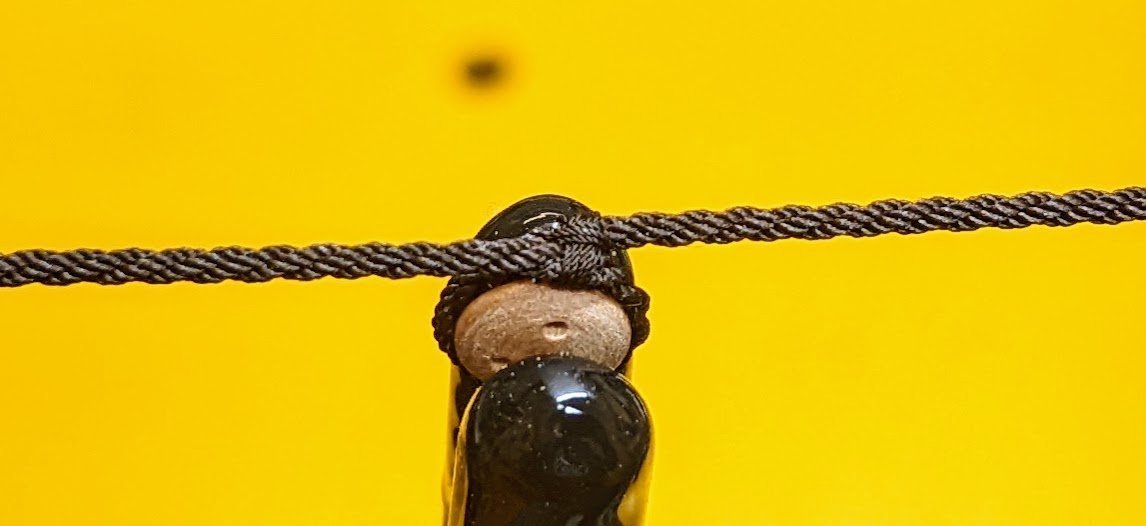
The next two seizing would be as you have done them. Also the way you tie them off is to pull the end through the gap and wrap around under so it holds it. Again see below picture.
You can't see it in the picture but the bottoms loop goes under the lanyard coming through the gap to secure everything.
None of this is necessary, but if you want to make it look a little more authentic these are some small adjustments you can make.
-
@wvdhee is correct. I would recommend taking off all of them and making sure you edge bend them enough. You will have a much easier time if you take them off and do it right now then if you try to compensate. Take your time and treat every plank as its own project.
-
43 minutes ago, mugje said:
Will be interesting to see how much difference there will be between the standard supplied blocks and the pear wood set.
I have the idea that the items are so small...that I wouldn't really see the difference, but who knows

Oh the pearwood ones are way better. If you look at my log you can see some up close photos of them.
I would highly recommend picking them up while he still has them in stock as no more can be gotten due to the war. The syren ones are also really nice, but they sell out so fast that it is hard to get them in the sizes you need.
I am of the view that for a relatively modest cost your model will look significantly better if you upgrade the blocks and get some better rope.
-
5 minutes ago, Isaiah said:
Such clean work, looks very nice.
Excuse me if this has been mentioned, but is this the cord that’s included in the kit?
I’m looking at purchasing a kit by Vanguard.
Thanks Isaiah. The rope I used was purchased from @BenD (ropes of scale). He produces some very nice rope in a wide variety of sizes and colours. He has even done some custom sizes for me. I am using his polyester rope (the anchor one is the cabled type). It has some upsides over natural fiber (no fuzz, higher definition), but also some downsides (stiff, can be difficult to get it to lay naturally, white glue doesn't work on it).
The kit rope is fine and like most of the kit is to a much higher quality than most kit stuff you will find, but not quite as nice as if you go out and buy some rope or make it yourself.
One of the nice things about the Vanguard Alert kit is that it is to a very high quality, but also there is lots of scope for improvements and adjustments. So if you want to do a bit of kit bashing I would highly recommend it. If you want to do the kit exactly as out of the box I would say that the new Vanguard cutter Sherbourne looks really nice.
-
7 hours ago, jpalmer1970 said:
That's a great idea for the knotted handrail - excellent work
Thanks though I can't claim credit. I got the idea from @Blue Ensign's alert log.
- Glen McGuire, AJohnson and jpalmer1970
-
 3
3
-
Have you tried cleaning the foil with isopropyl or acetone?
If all else fails you could go for a painted aged look. To be honest if I was going to do aged copper that is probably the way I would go. You have a lot more control over where you add the tarnish.
There was one poster on here at one point who discussed using urine to great effect. You can find his discussion of it here.
-
Log #76: Anchor Cable & Rails
I have a fairly small update for today.
I had intended to show pictures of my work on the yards, but after two days of work and 6 failed attempts at rigging blocks to a standard I am willing to accept I decided I would postpone an update on them till the next log post.
In the meantime I decided to secure the anchor cable to the windlass before too many ropes start to clutter the deck.
It is delicate work at this point trying to do this sort of thing without catching anything. I have to make sure I am fully in the zone for this and at all times am aware of where my hands are.
At this point I also replaced the belaying pins which I had previously broken when trying to get the bowsprit in place.
I also decided to get the rope that runs through the stantions in place and to add some knotted ropes to help with anyone trying to get on the ship.
And here is the current status of her. Thanks for stopping by.
- Colin B, Ronald-V, Blue Ensign and 22 others
-
 25
25
-
Hi @AmateurModelBuilder, welcome to the forums.
Your question is a very broad one and there is no way I can answer it in a post, but what I would suggest is the following:
- Start a build log, this is a great way to get help as you go along.
- Look for build logs of others who have done your kit and read them all.
- Search in this section of the forum for specific questions regarding painting. Navigate to here and then in the top right corner there is a search function. Search for the topic in question for example you could search "primer" and you will find lots of posts on the subject.
A quick summary of what you might want to think about with regard to painting is below:
In general when it comes specifically to painting you first need to seal the wood in some way. This can be accomplished through some sort of sanding sealer or by using an acrylic primer. After you prime you need to sand and then add another smooth coat and then sand again and so on. If you want to achieve a look a bit like on the box you will need some masking tape (I use tamiya). As a general rule I use a little bit of acrylic varnish to seal the gap when painting wood as otherwise sometimes it runs down the grain. If you use a sanding sealer this step may not be necessary.
For painting use thinned acrylic paint designed for miniature painting or artist grade acrylics (don't use cheap paint). My rule of thumb is two thin coats, though depending on the colour you may need a third. Always make sure you let the previous coat fully dry before adding the next and sand as necessary.
Take your time, model making is a marathon not a sprint. Treat each step as its own project, I have never regretted taking more time on something, but have frequently regretted rushing.
- mtaylor, AJohnson, ferretmary1 and 4 others
-
 7
7
-
This looks like a really nice little kit. Enjoy.
- Ryland Craze, Pitan, chris watton and 1 other
-
 3
3
-
 1
1
-
14 minutes ago, TJM said:
Hi Allan,
Thank you for your comment! Do I understand correctly that the one hole in the blocks should be closest to where the block is attached? So that when the line runs down, it would appear to go over the (imaginary) sheave inside the block?
Yes, that is correct. As Alan said you could probably just drill a new hole as that might be easier than removing the block and reattaching it.
- allanyed, Ryland Craze and TJM
-
 3
3
-
-
On 3/15/2024 at 2:08 PM, cdrusn89 said:
As I mentioned there was considerable difference in the thickness of the material provided - for the record here are two that turned up as I was shaping two more planks at the stern.
For the second planking a good idea is to go through all the strips and sort them by size and colour. For alert I didn’t find the differences to be huge, but there were enough to make a difference. I then paired them so I was using the same size of strip for the same strake on both sides. I also tried to make the colour have a gradient (so you don’t get the striped look).
- Theodosius, mtaylor, Gregory and 1 other
-
 4
4
-
Log #75: Odds and Ends
Thanks to everyone that stopped by and for the suggestions. I still have not decided what to do with the spare spars, but based on @druxey’s advice I am not going to stick them on the deck. Likely some combination of lashed to the shrouds or potentially putting the storm topgallant on the railing sticking out the back.
In the meantime I have been finishing up some odds and ends in preparation for work on the upper mainmast moving towards the topgallant. First up, the yards themselves are finished now and ready to start having the rigging attached to them.
I had some issues attaching the cleats? or whatever they are called at the ends of the yards as they are so small. I think in the future despite the fact that it makes painting more difficult I would make sure all the shaping is fully done before I start painting.
I also prepared the top of the mainmast to add the pendant for the topsail yard.
As this will be quite visible at the top of the model I gave them a bit more care and decided to add in a simulated bolt. Finally I finished securing and adding rope coils for the remaining lines I had not yet done. The inner tie was secured to the bits and I laid a coil against them. The inspiration for this came from a painting of a cutter that I saw in someone’s build log, but can’t remember which one anymore.
You can see I have put the cable for the anchor in place, but I have not fixed it down as I want to be able to move it if necessary as I do the rigging.
The sheet for the mainsail was coiled around the cleat on the boom.
And finally I started experimenting with rope hanks. This is for the outer tie or peak halliard which is secured with two single blocks attached with a hook to an eyebolt on the larboard channels.
The excess rope was coiled in a hank on the nearest shroud cleat. Still not entirely pleased with it, but I learned a lot. Once I get my method figured out I will probably post about it in more detail.
-
You are making quick progress. At this rate you will pass me soon.
-
1 hour ago, rvchima said:
Walter,
How did you spread the rings that go around the deadeyes? I am having trouble inserting the deadeyes without damaging the finish.
Rod
A bit of damage is inevitable. I also had trouble on alert. I just used pliers gently to pry it apart and then touched up the damaged parts with black paint afterwards.
I believe some people blacken with the deadeyes on, but you probably want to test this before committing.
-
-
Great job, I always appreciate seeing people have the courage to try and paint directly on the model.
If I may make a small suggestion, a bit of colour variation on the blue would really add to it. You have this nice contrast on the yellow, but the blue stands out where it is just one flat colour.
-
I think it looks good. You could also use a brown wash built up in multiple thin layers to tone down the copper colour some more and boost the contrast.
- mtaylor, Nirvana, Ryland Craze and 2 others
-
 5
5
-
The varnish layer is usually used to do one of two things:
- A gloss layer to allow the washes to better flow (for example when you want to do panel lining). (I personally have never bothered with this as I found that if you let the paint dry fully then as long as you are careful with the oil wash, it is never a problem cleaning up spills).
- To protect the layer beneath if you need to clean off overspill or are going to be rubbing it off in the case of say an oil wash.
For the everyday run of the mill base coat - wash - drybrush you don't need to seal the layers. There are also cases when you are doing a competition piece where you might want to have a save point you can revert to, but that is for models that you are putting hundreds of hours into painting.
I have painted hundreds of model figures, some to a fairly high standard and I have never sealed them except as a very last step to protect the paint job from handling and adjust the sheen. The only exception to this is I seal the area before applying decals.
- wefalck, mtaylor, Keith Black and 1 other
-
 4
4
-

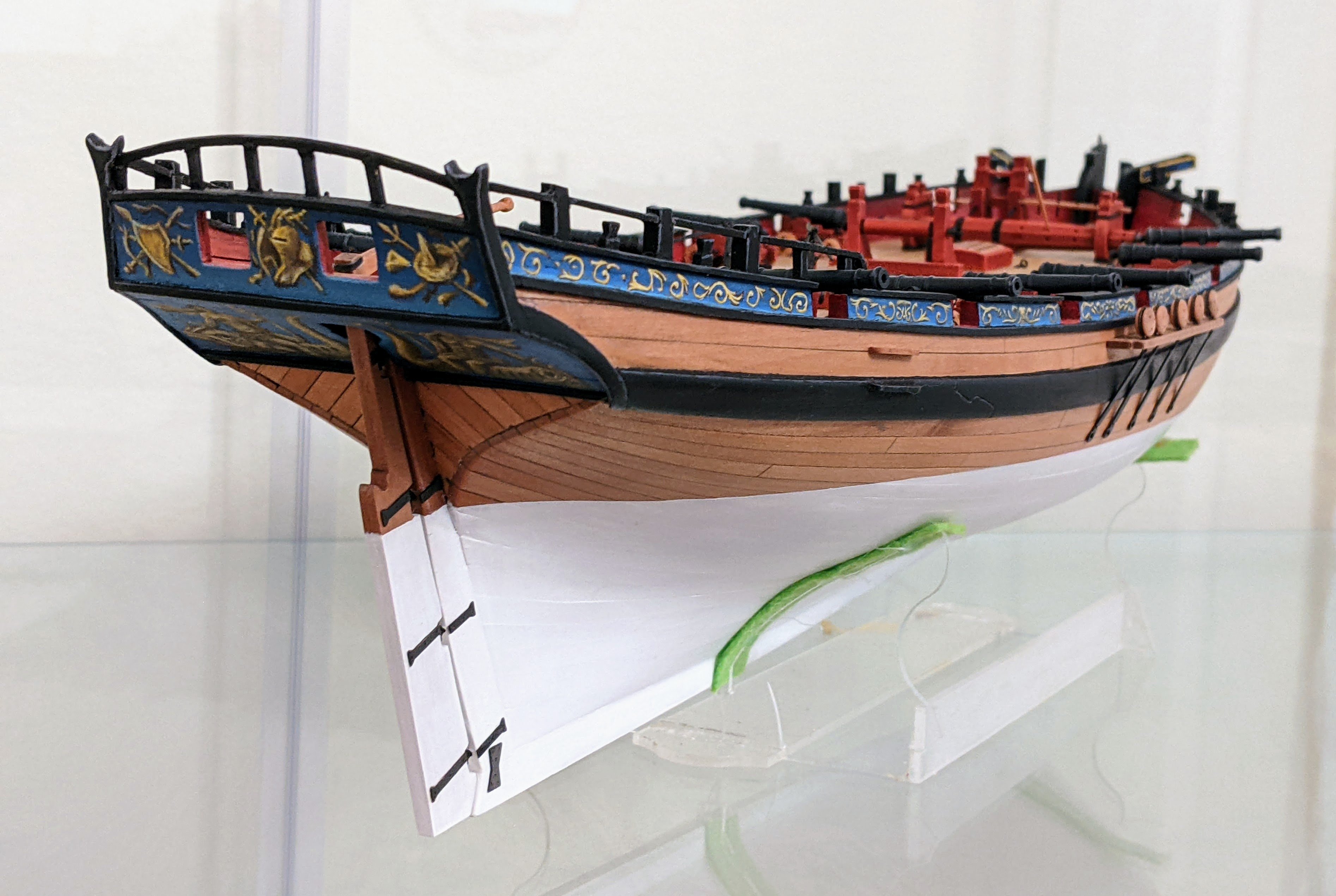


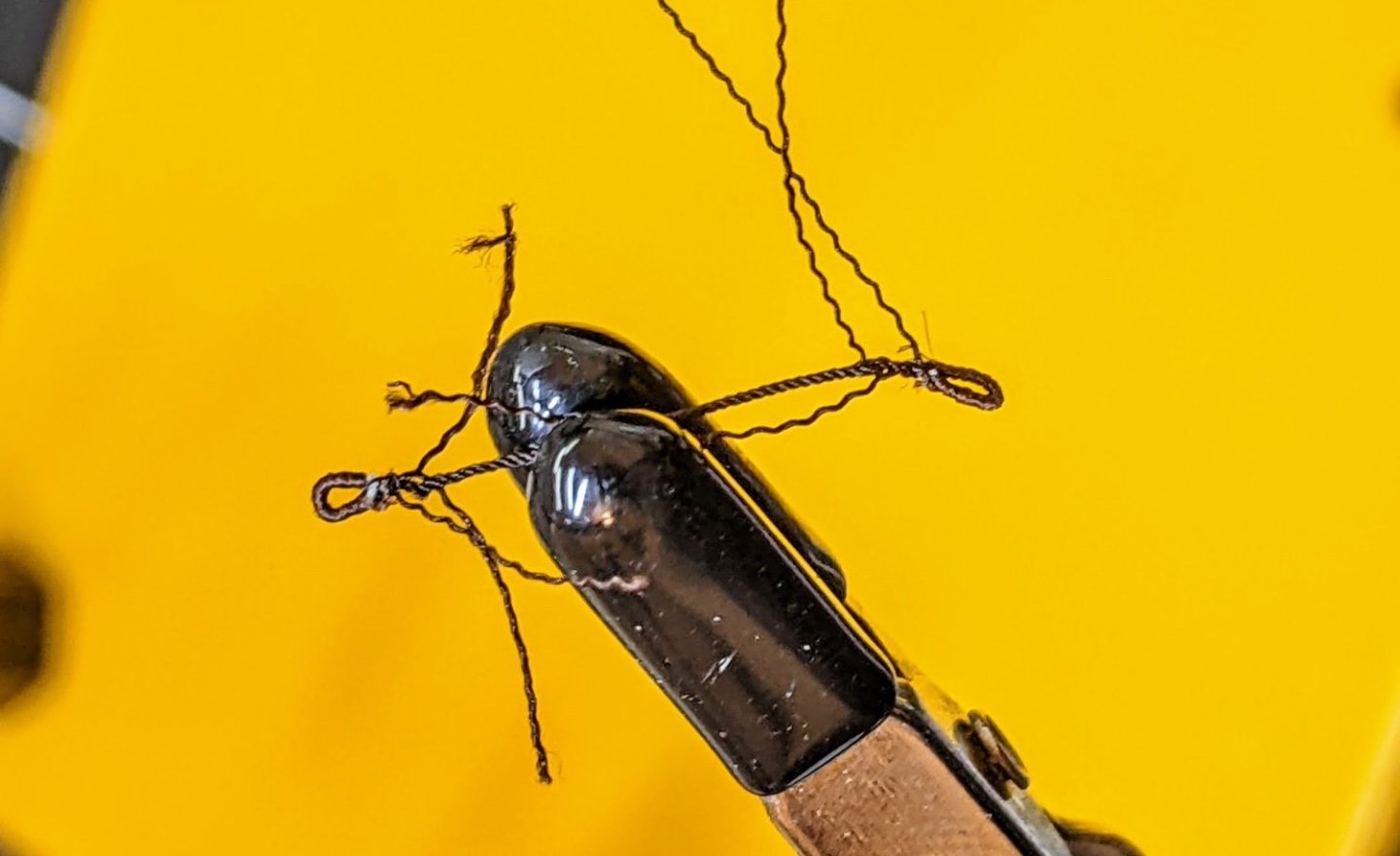
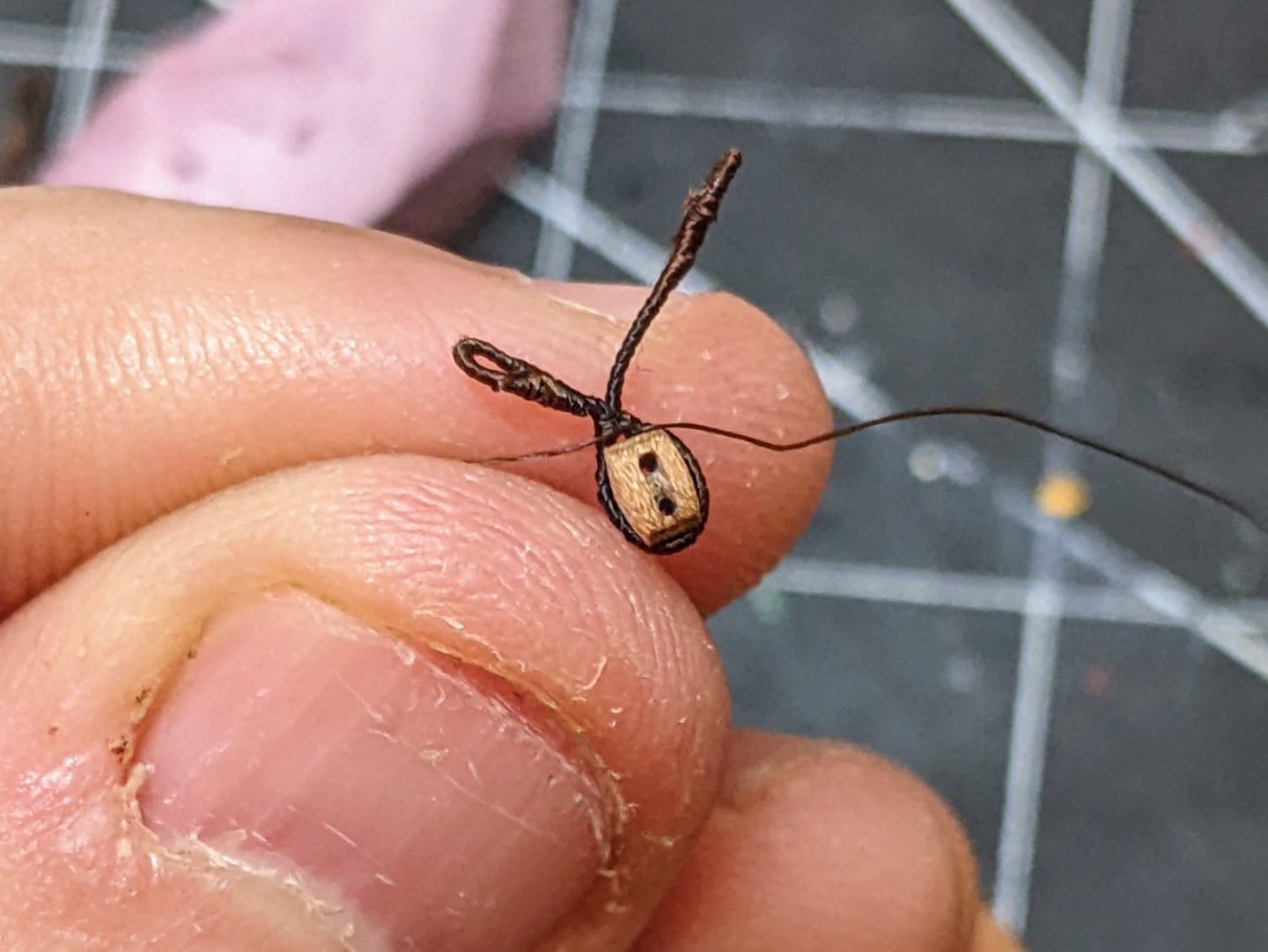
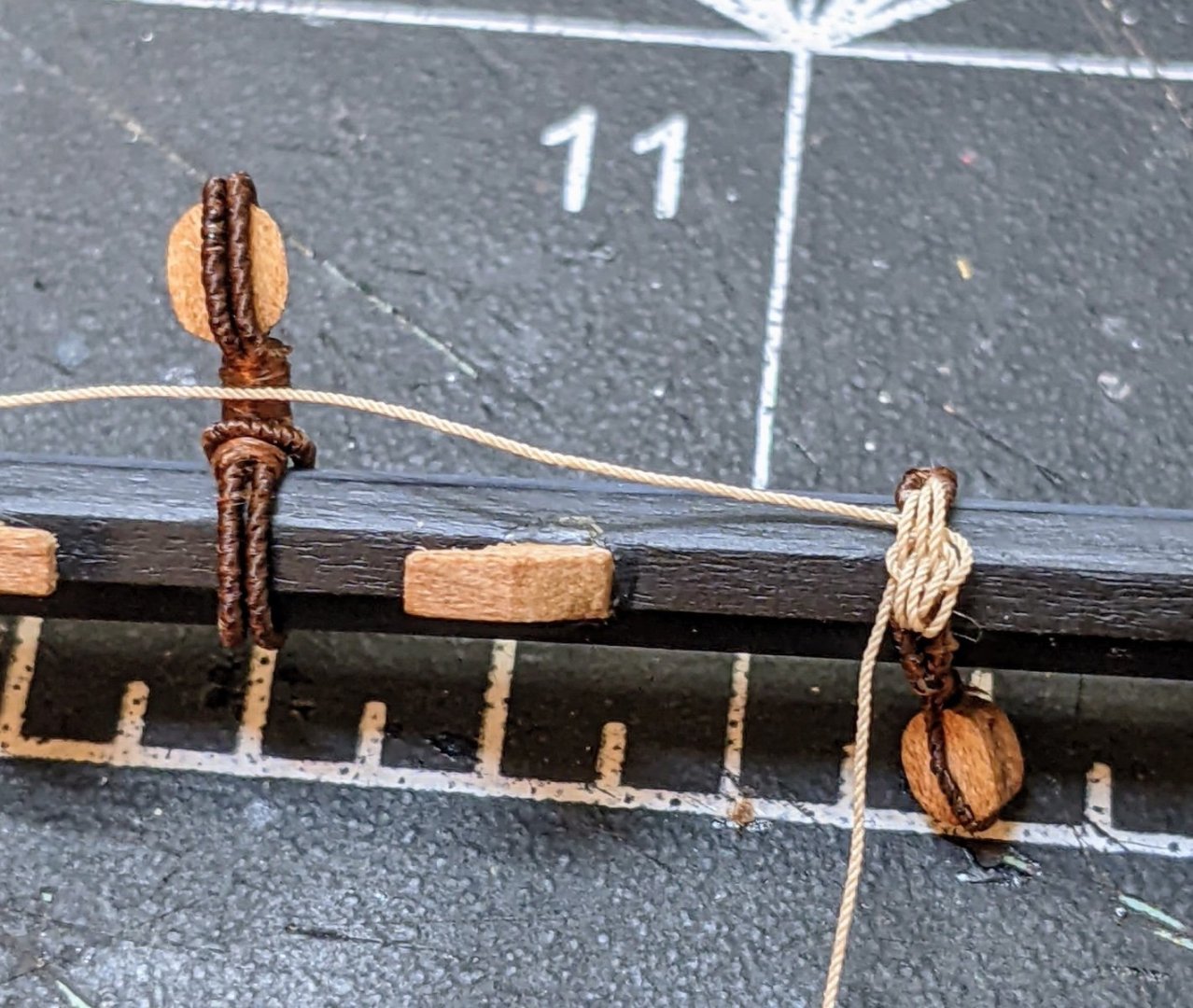
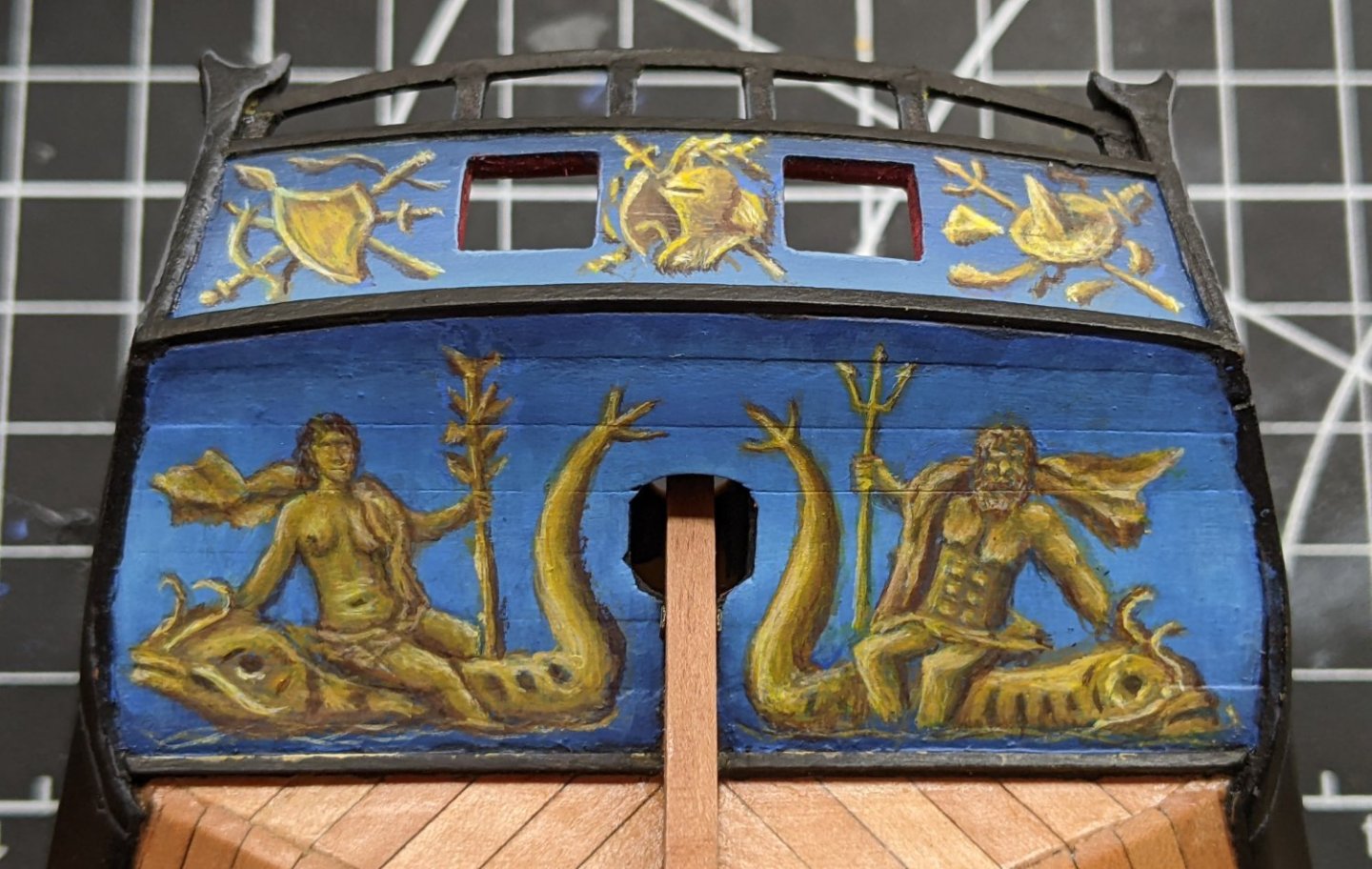

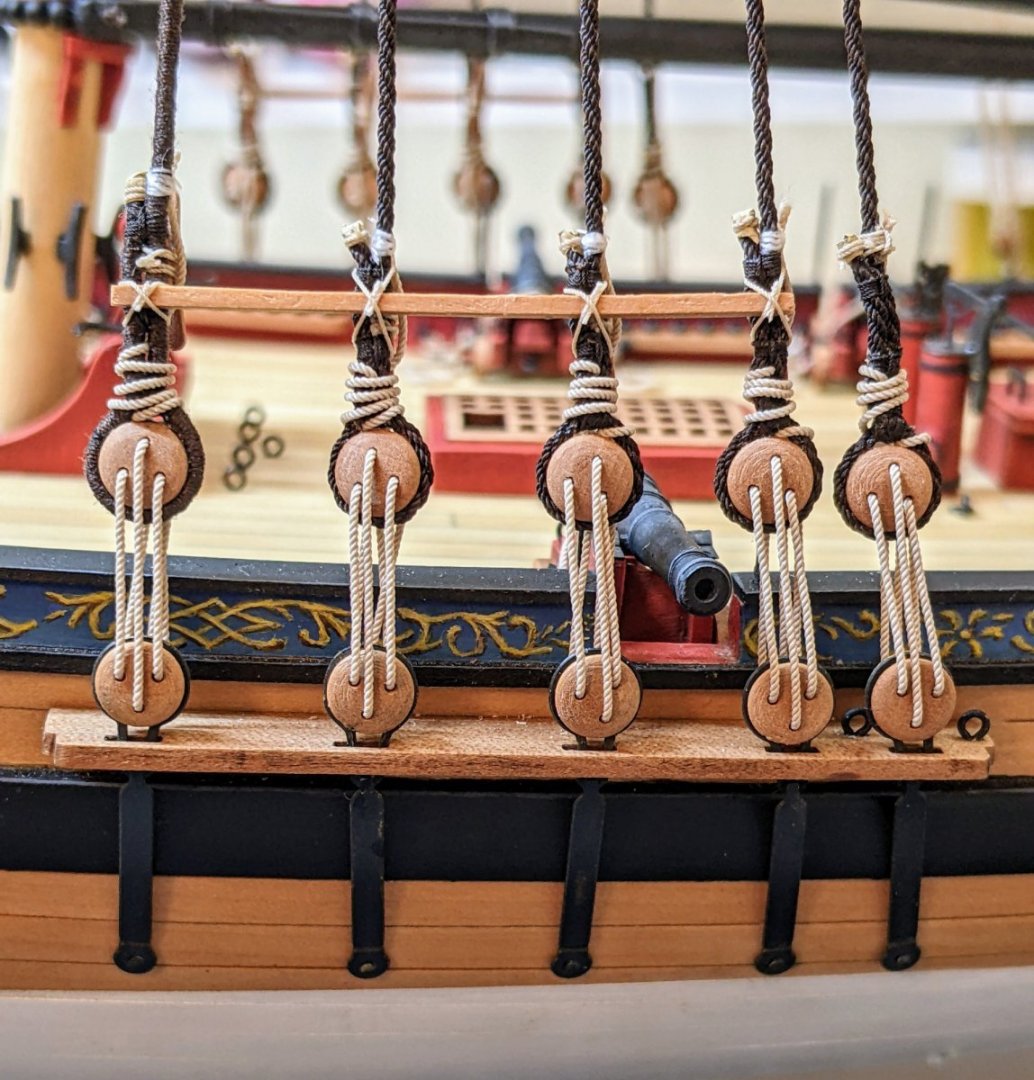
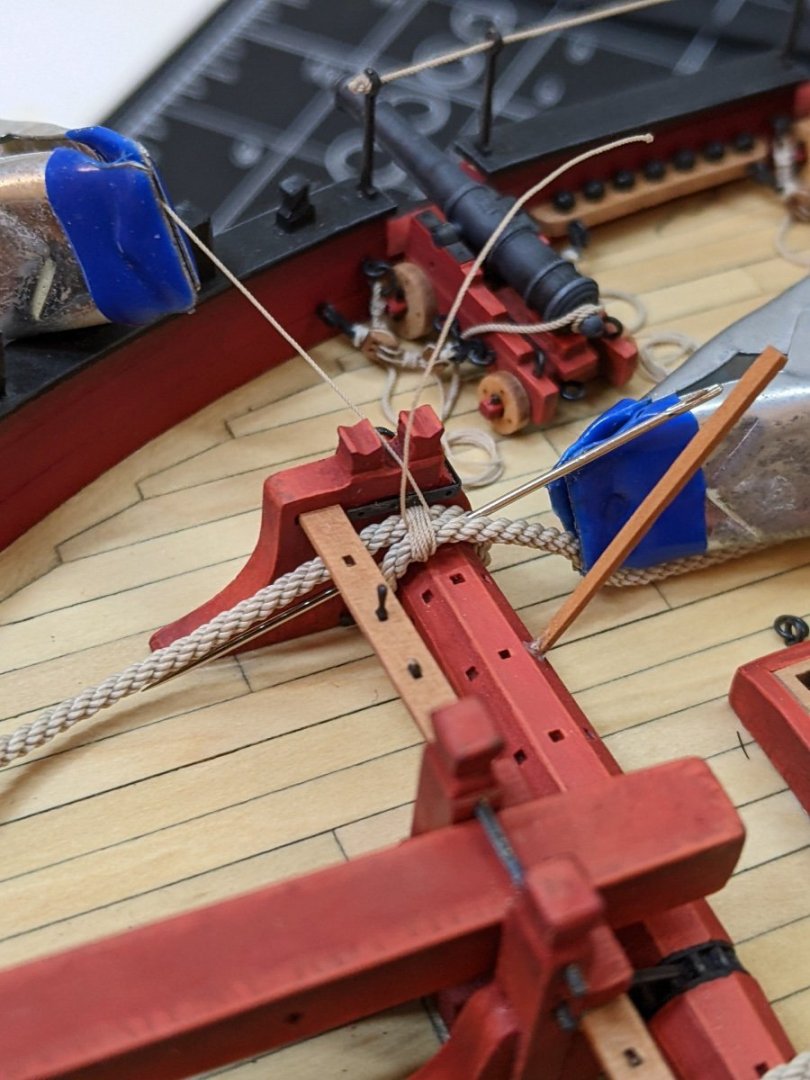

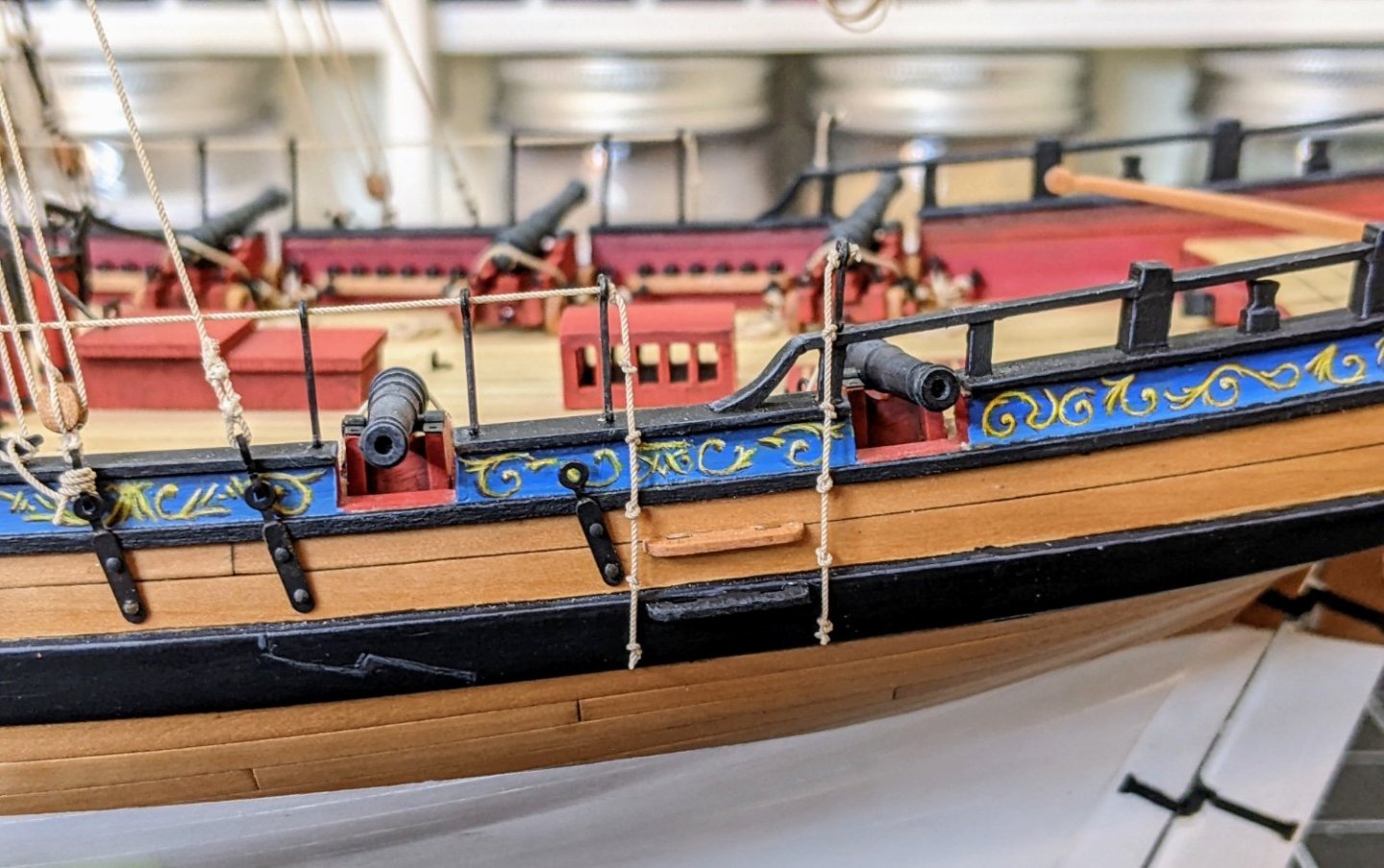
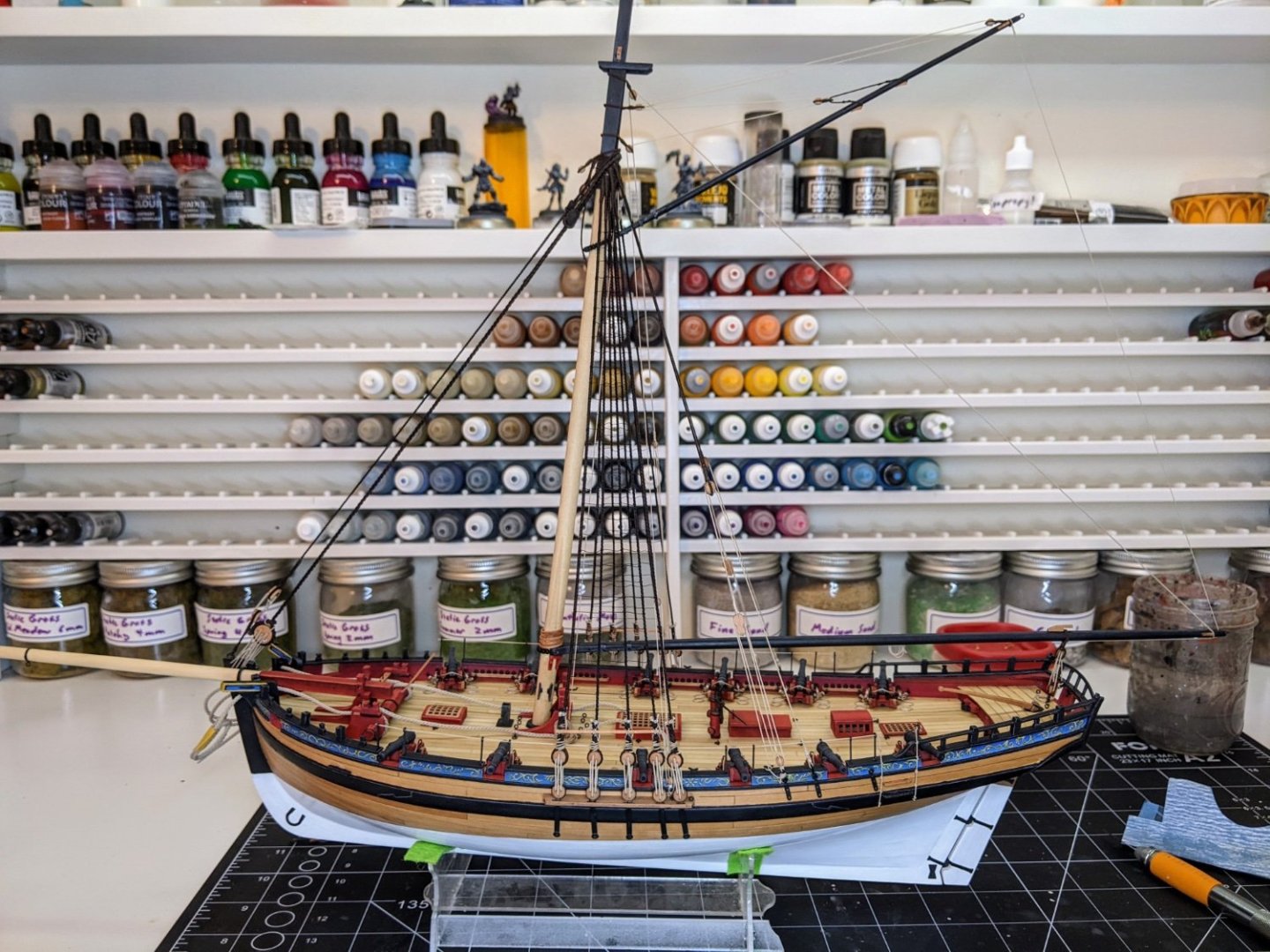
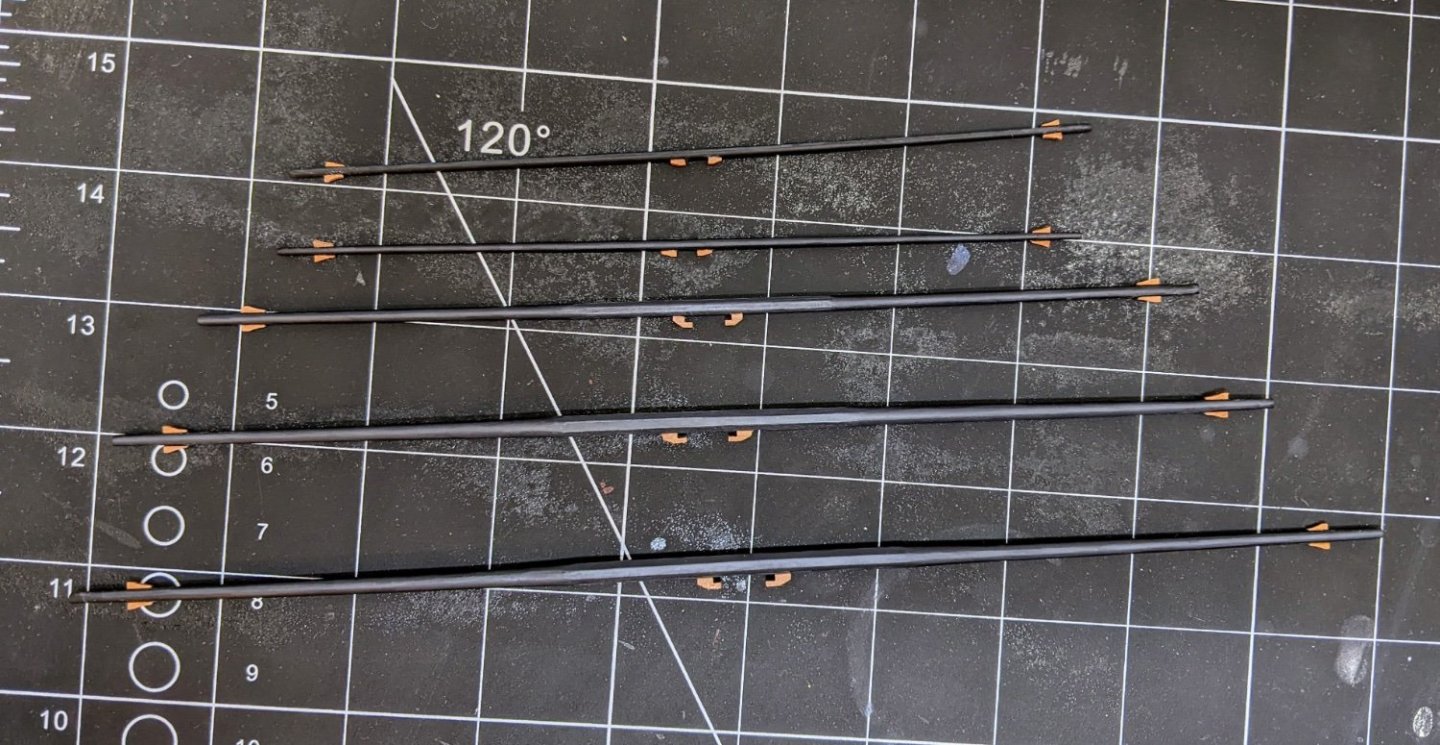

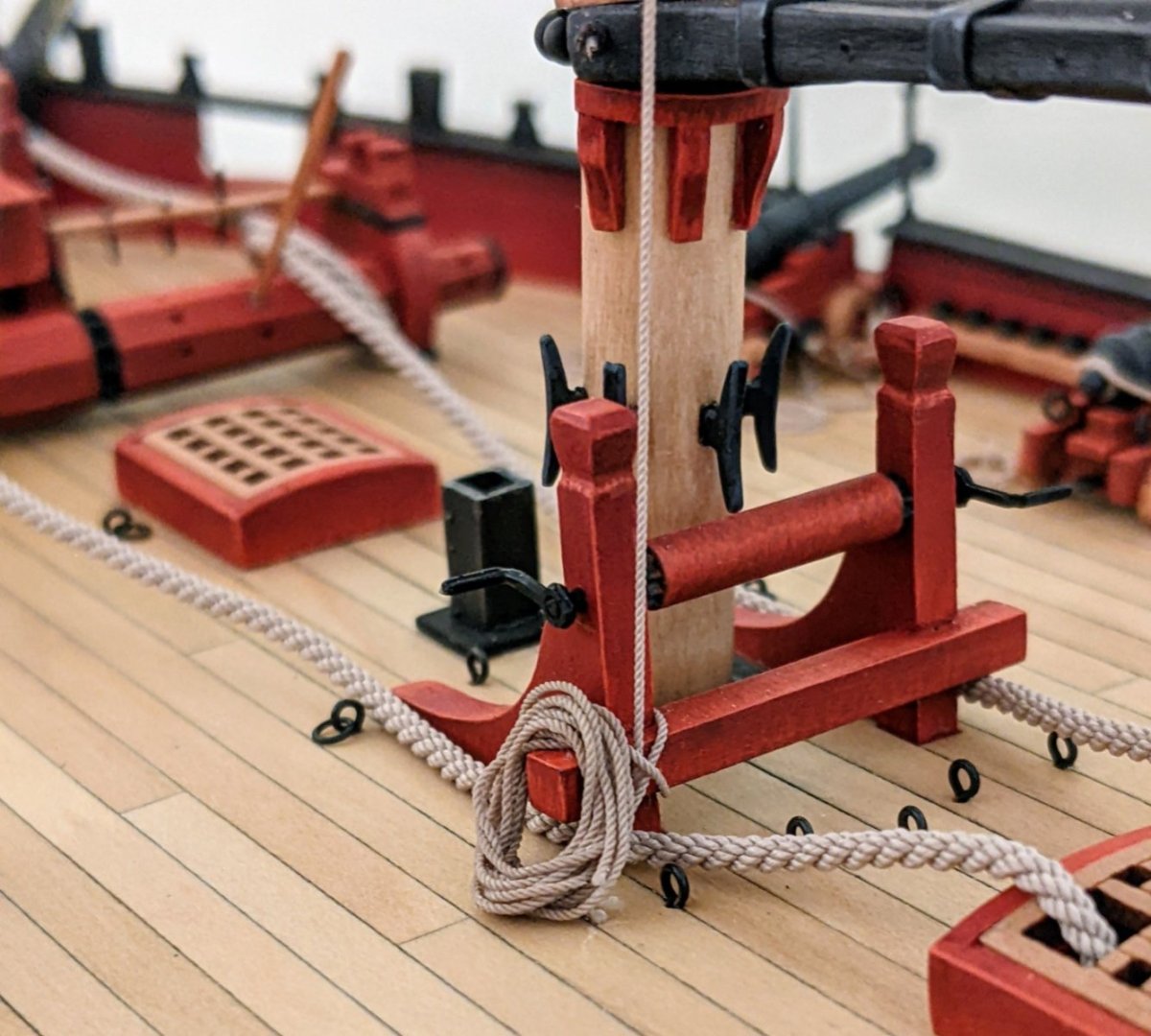

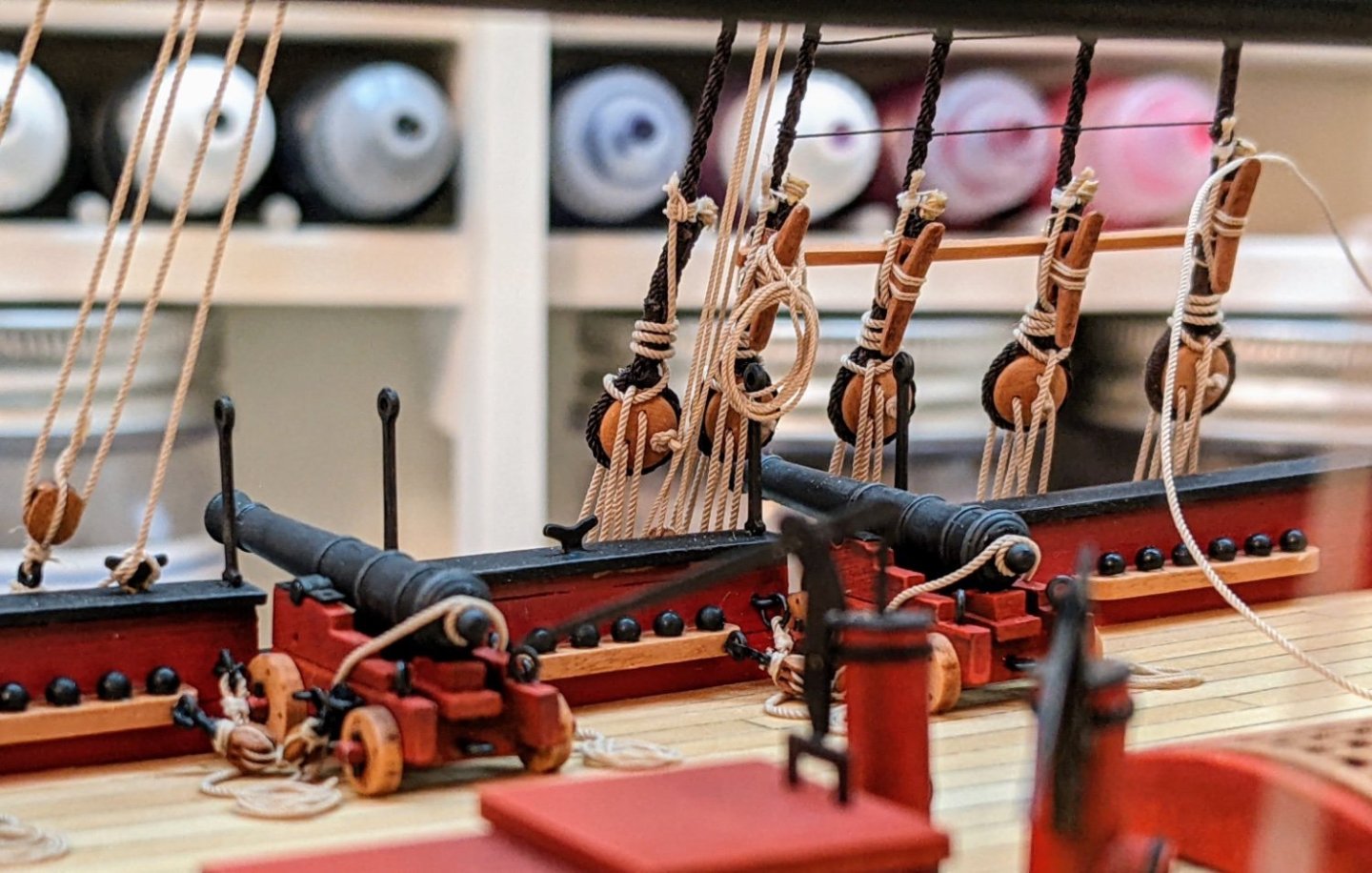
HM Cutter Alert by Thukydides - FINISHED - Vanguard Models - 1:64 - first build
in - Kit build logs for subjects built from 1751 - 1800
Posted · Edited by Thukydides
Thanks Alan for taking a look.
I also have been digging into this more. My first thought was to take a look at Steel. There are a number of plates in the elements and practices of seamanship which may shed light on this question, for example see below.
But all of the images like this one are not high enough resolution to really say for sure. Once you start to zoom in you can’t quite tell if they are served or not.
I did some more reading of Lees and he has the following to say on p162 after noting that these things have not changed much since the early days of sail:
Now what constitutes a large strap is up for debate, but I would guess based on this that Lees would recommend serving all of the straps attaching blocks to the yards. This does make logical sense, but as of yet I have been unable to find any primary sources which confirm this.
On the balance I think I will probably serve them as I have already served most of the blocks I have been attaching to the mast and yards using a single long strop and logically if I was doing it for them, this shouldn’t change for using a lashed strapping. However, if anyone has any sources the can point me to which either confirm or contradict this line of thinking I would be interested in looking at them.